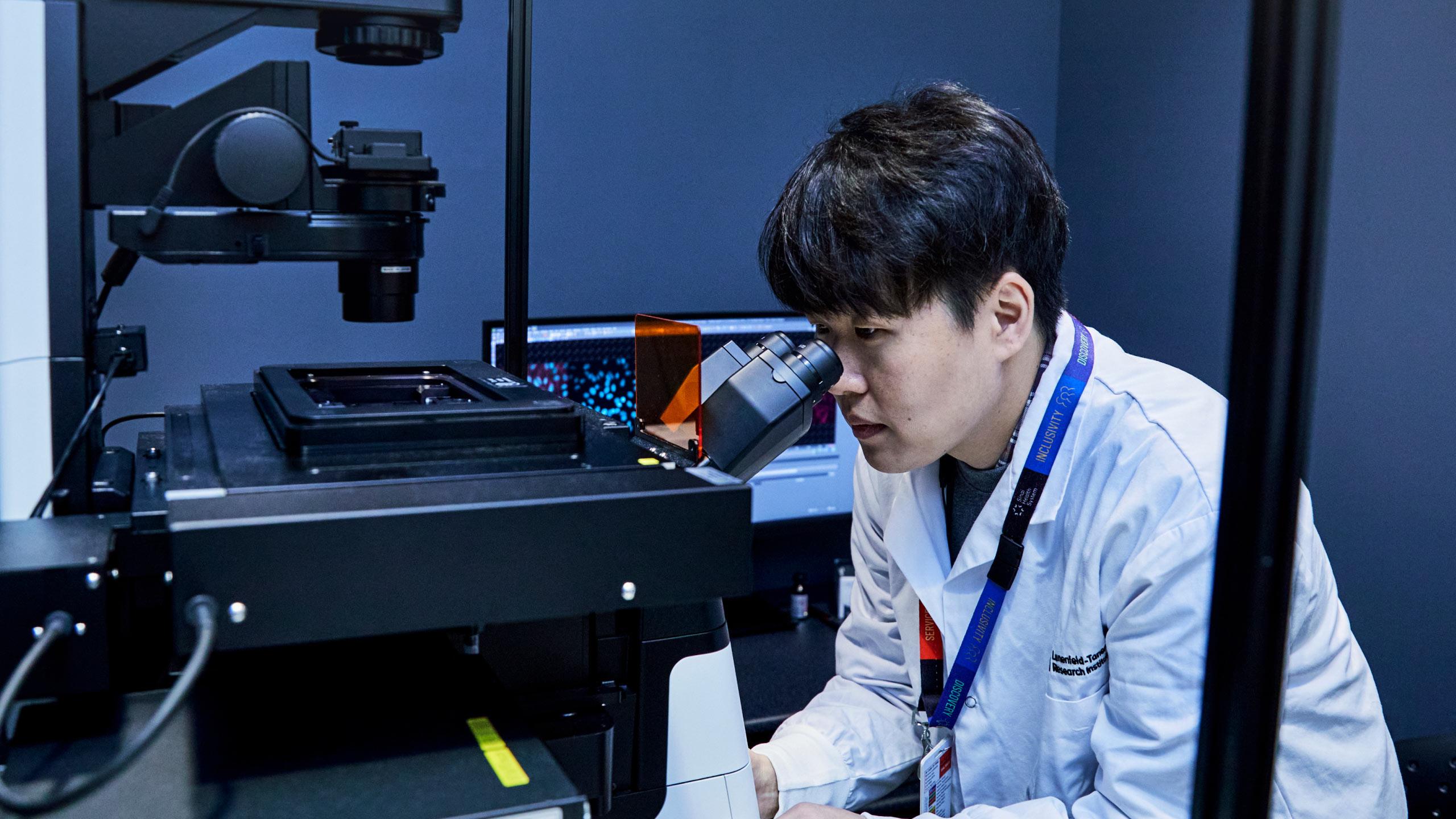Ophthalmology Diagnostic Testing
Learn about the tests that help diagnose and monitor eye disease and disorders.
What we do
Ophthalmologists use a number of tests to help diagnose and monitor eye disease. The following tests help our ophthalmologists recommend the best treatment plan.
Optical coherence tomography
Optical coherence tomography (OCT) is an imaging test that uses light waves to take cross-sectional pictures of the macula (part of the back of your eye) and the optic nerve (which sends messages from your eyes to your brain).
The test takes about 10 minutes and you will not feel pain or discomfort.
A technician may put drops in your eyes to dilate your pupils before the test. This makes it easier to see into your eyes.
OCT can help diagnose:
- Macular edema
- Macular hole
- Age-related macular degeneration
- Glaucoma
- Diabetic retinopathy
- Retinal detachment
- Disorders of the optic nerve
Visual field tests
Visual field tests are a group of tests that help determine how wide of an area you can see when you focus on a central point. This is called peripheral vision.
These tests can also discover blind spots in your vision and assess whether issues with your eyelids are affecting your vision.
Visual field tests can help monitor the following conditions:
- Glaucoma
- Multiple sclerosis
- Thyroid eye disease (Graves disease)
- Pituitary gland disorders
- Brain tumours
- Stroke
Humphrey visual field tests (automated static perimetry test)
Humphrey visual field tests help ophthalmologists understand your range of vision and the brightness you can see.
For these tests, you will sit at a machine and look into a bowl-shaped area. One eye will be covered with a patch. As you look at a target in the middle of the bowl, dim lights will appear around it. A technician will ask you to press a button whenever you see a light.
Humphrey visual field tests can be used to diagnose a range of conditions and are also used as a Ministry of Transportation test for driving.
Amsler grid test
The Amsler grid test is used at home by patients who have advanced macular degeneration. By looking at the grid every day and noting if there are any lines that look blurry, wavy, dark or blank, you can catch changes in your vision that would not otherwise be obvious.
Confrontation visual fields
For this test, you look straight ahead and cover one eye while a technician holds up fingers in your peripheral vision and asks how many you can see.
Fluorescein angiogram
A fluorescein angiogram is a test that uses a special camera to take pictures of your retina, a layer at the back of your eye.
First, we put drops in your eye to dilate your pupil. Then we inject a yellow dye into a vein in your arm. The dye travels to the blood vessels in your eye and helps us see the blood flow in your retina.
Your vision may be blurry and your eyes may be sensitive to light for several hours after the procedure.
Fluorescein angiograms help diagnose and monitor the following conditions:
- Macular edema
- Diabetic retinopathy
- Macular degeneration
- Blockage of the veins inside the eye
- Macular pucker
- Ocular melanoma
Ultrasound biomicroscopy
An ultrasound biomicroscopy (UBM) uses a small ultrasound wand to examine parts of the eye near the front of the eyeball, such as the cornea, iris, lens and ciliary body (which is behind the iris).
Before the ultrasound, a technician will put anesthetic drops in your eyes to numb them. You will not feel any pain from the procedure, which will take about 10 minutes to complete.
This test may make your vision temporarily blurry. You will need to wait around 30 minutes after your ultrasound for your vision to return to normal. You should not to rub your eyes until your anesthetic has worn off completely. Rubbing your eyes while they’re numb can cause injury.
Ultrasound biomicroscopy can help diagnose and monitor the following conditions:
- Glaucoma
- Eye injuries
- Ciliary body cysts
- Tumours
Biometric testing
Biometric testing is used to measure your eyes for cataract lenses before cataract surgery.
Optical biometry
Optical biometry is the most common test used to prepare for cataract surgery. This test uses light to measure the cornea and other parts of the eye so that we can calculate the power of the lenses needed for your cataract surgery.
Optical biometry is non-invasive. The medical equipment will not touch your eye.
A-scan
A-scans are a type of ultrasound used to measure the length of the eye for cataract lenses. In some cases, A-scans also provide information about abnormalities in the eye.
Before your A-scan, a technician will put anesthetic drops in your eyes to numb them. Your scan will take about 15 minutes. You will not feel any discomfort or pain during the procedure.
This test may make your vision temporarily blurry. You will need to wait around 30 minutes after the scan for your vision to return to normal. You should not rub your eyes until your anesthetic has worn off completely. Rubbing your eyes while they’re numb can cause injury.
B-scan
B-scans are a type of ultrasound that allow your physician to look at structures in back of your eye and the eye socket.
Your physician may recommend a B-scan when cataracts or other issues make it difficult to examine the back of your eye using other tests.
B-scans provide more detailed information than A-scans and can be used to diagnose issues such as:
- Tumours
- Retinal detachment
- Vitreous hemorrhage
- Injuries to the eye socket
Ophthalmology clinic
60 Murray Street
Level 1
Suite L1-001 and L1-040
See maps, directions and parking for Mount Sinai Hospital.
From the parking lot entrance, walk straight down the hall to the clinic.
From the Murray Street entrance, go down to first floor. You will find the clinic next to the elevators.








